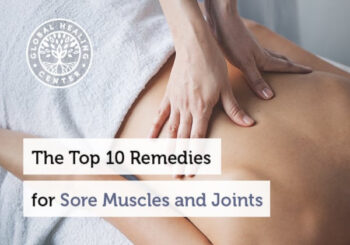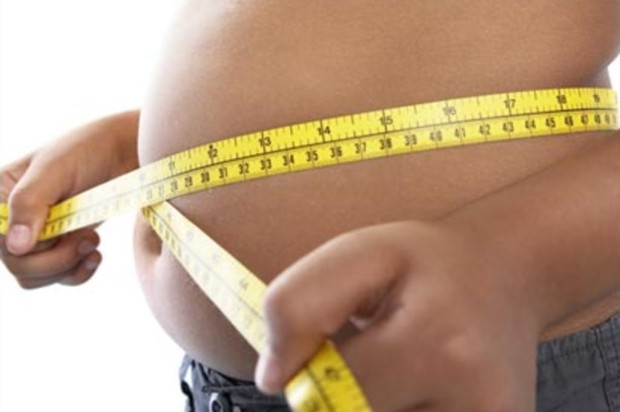Guest Writer for Wake Up World
Almost everyone has experienced muscle or joint discomfort at some point in their life. The entire human body contains muscles and joints that are constantly in motion, making it easy for discomfort to appear anywhere, anytime. The most common type of muscle discomfort affects the lower back; an estimated 80% of the adult population in the United States has this condition. It’s one of the top reasons why people see a doctor. It is also a leading cause of disability in Americans under the age of 45.[1]
Muscle aches may involve ligaments, tendons, and fascia.[2] A ligament is the fibrous collagen tissue that connects bones to other bones. A tendon is an inelastic band of collagen that connects muscle to bone. Fascia is dense connective tissues that connect muscle, bones, and organs.[3]
Why Do Muscles Get Sore?
Sore muscles can result from a variety of causes; exercise is one of the most common.[4] Other factors, such as stress can cause a stiff jaw, neck, or aches elsewhere on the body.[5] Twisting, bending, or straining can also cause sore muscles.[1]
Certain medical conditions and diseases, such as fibromyalgia, infections, flu, Lyme disease, polio, and lupus may cause muscle soreness.[2] Car accidents are a significant cause of injury, usually to neck muscles.[6] Almost 2.5 million people are injured or disabled in road crashes every year! Dehydration can cause electrolyte imbalances due to low levels of potassium, calcium, or magnesium, leading to muscle cramps and discomfort.
Top Remedies for Sore Muscles and Joints
Stiff, sore muscles are a literal pain but relief is possible, and it doesn’t have to come in the form of a pill. Here we’ll look at some of the best natural remedies for sore muscles and joints.
1. Chiropractic
Chiropractors are healthcare professionals who perform adjustments to the spine and other parts of the body.[7] The goal is to alleviate muscle and joint discomfort, improve range of motion, and support the ability of the body to heal itself.[8] There are currently more than 30,000 chiropractors treating approximately 30 million people per year in the U.S. These numbers will increase as people become more aware of the efficacy of chiropractic.
2. Inversion Therapy
Inversion therapy involves hanging upside down from an inversion table to take pressure off the nerve and discs in your spine by increasing the space between the vertebrae.[9] A plethora of studies confirmed the health benefits of inversion therapy.[10]
3. Yoga
Yoga is a mind and body practice that originated in India.[11] It involves practicing different physical postures, breathing techniques, meditation, and relaxation. According to the National Institutes of Health, a weekly yoga class can be effective at reducing back discomfort.[12] It is no wonder why yoga is increasing in popularity; between 2012-2015, the number of American yoga practitioners grew by more than 75% from 20.4 million to over 36 million.
4. Stretching
As with yoga, stretching is incredibly effective for supporting muscle and joint health.[13] One study found that a stretching class was even more effective than a yoga class for alleviating lower back discomfort.[15] Stretching can increase a joint’s range of motion.[14] Stretches last from 15 to 30 seconds have the most positive impact on joints.[14] Interestingly, while pre-exercise stretches increase flexibility, it reduces muscle strength.[14] Overall, stretching is an effective way to relieve muscle soreness, including in patients with fibromyalgia or other conditions.[16]
5. Ice and Heat
People always want to know whether it’s better to apply heat or cold to injuries and sore muscles. There are a few ways and reasons to use either one of these therapies. Muscle discomfort as a result of athletic strain or injury has seen more benefits from either an ice pack or immersion in cold water. Using an ice compress usually involves applying this pack for 20 minutes, four to six times a day for the first 24 to 72 hours. Following with heat is sometimes used to help soothe away the discomfort.[2] Many athletes choose to immerse themselves in cold water for specific amounts of time or use a technique called contrast water therapy where they go back and forth between hot and cold baths to help blood flow. Lastly, a review of the limited studies found evidence that heat wraps definitely help lower back issues as the tension is usually deep in the tissue, and muscle tension in the back can be aggravated by ice treatments.[17]
6. Topical Muscle and Joint Relief
There are many over-the-counter lotions and creams that help reduce muscle and joint discomfort.[18] People, including athletes, frequently use creams and ointments for minor muscle aches. Most of these products only provide temporary relief and do not address the root cause.
7. Massage
Physiologically, massages relax muscles and increase blood and lymph circulation. A review of many studies concluded that massage alleviates, or reduces, delayed-onset muscle soreness (DOMS), after exercise.[19] When muscle tightness or discomfort occurs, you have the option to go to a massage therapist, or you can simply do it yourself. Giving yourself a massage is always a great way to relieve aches and tension in the parts of your body you’re able to reach the minute you need to. A self-message gives you control over how much pressure you’re putting on your muscles and for how long. A massage stick or roller can do wonders. Massage also increases the hormone oxytocin and decreases levels of cortisol and adrenocorticotropin – hormones produced during stress.[20,21] This means massage relieves stress-related muscle tension.
8. Epsom Salt
Epsom salt, which contains magnesium sulfate, is typically used for hot soaks in the bathtub. There are not many scientific studies of how effective Epsom salts are for reducing muscle soreness. One review only found four studies, three in pregnant women and one in older patients. Epsom salts helped reduce muscle soreness in the older adults, but half the studies in pregnant women showed a positive effect while the others found no effect.[22, 23] Regardless, soaking in a hot bath can relax muscles.[24]
9. Over-the-Counter (OTC) Medications
There are some over-the-counter medications that can relieve muscle pain. The most common are non-steroidal anti-inflammatory (NSAID) pills and capsules that have many side effects, including increasing your risk of getting a leaky gut (increased intestinal permeability).[25]
10. Natural Supplements
Science has suggested that several supplements, ranging from vitamins to herbs, help relieve muscle soreness.
Omega-3 Fatty Acids
Omega-3 fatty acids are the most popular health supplement in the United States – and for a good reason.[26] These fatty acids are found in fish oil as well as plant-based options such as flaxseed or algae oils. Scientific studies found that people with non-surgical neck and back discomfort given 1200 to 2400 mg per day of omega-3 essential fatty acids experienced a 60% reduction in symptoms, 80% were happy with the results. But even more surprising, 59% were able to eliminate their use of prescription medication because of the omega-3 supplement.[27]
Turmeric
The curcumin compound found in the root known as turmeric (Curcuma longa) has many health benefits, including relieving sore muscles. Both Ayurvedic and Chinese medicines have used turmeric for centuries to soothe irritation and loosen stiff joints, among other uses. It has strong antioxidant properties and regulates enzymes in the body.[28] Turmeric is a safe and effective substance for muscle soreness, with few side effects.[28] Because it operates similarly to NSAIDs, it can interact with them. Thus taking turmeric may also allow you to reduce the use of over-the-counter medications.[28]
Capsaicin
Capsaicin (8-methyl-N-vanillyl-6-nonenamide) comes from chili peppers (Capsicum spp.) The substance is known to cause regional anesthesia, meaning when applied topically it can reduce soreness and irritation.[28] It’s also taken internally in capsules to soothe joint, muscle and nerve soreness.
Vitamin D
Some research has linked low levels of vitamin D with muscle and joint soreness. Studies have found that vitamin D has anti-irritation effects and can reduce skeletomuscular discomfort. When the body is low in vitamin D, the immune system’s T-cells cause the body to create redness and sore tissues. With an adequate supply of vitamin D, the compound inhibits the T-cells, thus reducing soreness.[29]
What About Sprains and Strains?
A sprain is a stretched or torn ligament.[15] Remember, a ligament is a fibrous connective tissue that attaches bone to bone. According to the American Orthopaedic Foot and Ankle Society (AOFAS), as many as 25,000 people sprain an ankle every day. This adds up to almost 10 million sprained ankles every year![16]
Remedies for sprains and strains include rest, ice, compression, elevation, and physical therapy.[17]
How to Avoid Muscle and Joint Discomfort
Warming-up and stretching before and after exercise are extremely important. Sit and stand with good posture. Stretch a few times a week. Stay active. And, if you are overweight, losing weight can reduce the strain on your back.[18]
Drink plenty of fluids before, during, and after exercise. If your work requires sitting in the same position most of the day, try to stretch or walk several times throughout the day (at least once every hour).[2] Finally, maintain good form and posture when lifting heavy objects. Your legs should do most of the work.
If your symptoms are severe or last longer than feels reasonably tolerable, go to your healthcare provider. Be sure to ask your physician about natural health remedies, and choose a provider who is aware of the benefits of a holistic approach to healthcare.
References:
- Steven Ehrlich. “Low Back Pain.” University of Maryland Medical Center. 2/14/16.
- Linda Vorvick, David Zieve, Isla Ogilvie, A.D.A.M editorial team. “Muscle Aches.” Medline Plus. Updated 4/11/2015.
- Schleip R, Klinger W, Lehman-Horn F. “Active fascial contractility.” Medical Hypotheses 2005;65(2):273-7.
- Miles MP, Clarkson PM. “Exercise-induced muscle pain, soreness, and cramps.” Journal of sports medicine and physical fitness, 1994 Sep;34(3):203-16.
- Linda J. Vorvick. “Stress and Your Health.” Medline Plus. 11/23/2014.
- “Back Injuries.” Medline Plus.
- “Chiropractic.” Medline Plus.
- “Chiropractic: In Depth.” National Center for Complementary and Integrative Health. February 2012.
- Edward Laskowski. Back Pain. “Does inversion therapy relieve back pain?” Mayo Clinic.
- “Inversion Therapy: a study of physiological effects.” The Journal of the Canadian Chiropractic Association. 1985 Sep; 29(3),135-140.
- “Yoga: In Depth.” National Center for Complementary and Integrative Health. June 2013.
- Nicki Contie. “Yoga or Stretching Eases Low Back Pain.” NIH Research Matters. October 31, 2011.
- Page P. “Current concepts in muscle stretching for exercise and rehabilitation.” Int J Sports Phys Ther. 2012;7(1),109–119.
- Karen Sherman, et al. “A Randomized Trial Comparing Yoga, Stretching, and a Self-care Book for Chronic Low Back Pain.” Arch Intern Med. 2011 Dec 12;171(22):2019-2026.
- Assumpção A. “Muscle stretching exercises and resistance training in fibromyalgia: which is better? A three-arm randomized controlled trial.” Eur J Phys Rehabil Med. Nov 29 2017;doi: 10.23736/S1973-9087.17.04876-6.
- French SD, et al. “A Cochrane review of superficial heat or cold for low back pain.” Spine (Phila Pa 1976). 2006;31(9),998-1006.
- Jorge LL, et al. “Topical preparations for pain relief: efficacy and patient adherence.” J Pain Res: 2011;4,11–24.
- Guo J, et al. “Massage Alleviates Delayed Onset Muscle Soreness after Strenuous Exercise: A Systematic Review and Meta-Analysis.” Front Physiol. 2017;8,747.
- Ironson G, et al. “Massage Therapy is Associated with Enhancement of the Immune System’s Cytotoxic Capacity.” Int J Neurosci. 1996;84(1-4),205-17.
- Morhenn V, et al.”Massage increases oxytocin and reduces adrenocorticotropin hormone in humans.” Altern Ther Health Med. 2012;18(6),11-18.
- Garrison SR, et al. “Magnesium for skeletal muscle cramps.” Cochrane Database of Systematic Reviews 2012;12;(9):CD009402.
- “Magnesium for muscle cramps. Cochrane Database of Systematic Reviews: Plain Language Summaries.” 12 Sep. 2012. Accessed 1 May 2018.
- Skurvydas A. “Leg immersion in warm water, stretch-shortening exercise, and exercise-induced muscle damage.” J Athl Train. 2008;43(6),92-9.
- Sigthorsson G, et al. “Intestinal permeability and inflammation in patients on NSAIDs.” Gut. 1998 Oct; 43(4): 506–511.
- “Use of Complementary Health Approaches in the U.S.: Most Used Natural Products.” National Center for Complementary and Integrative Health (NCCIH), National Institutes of Health. 24 Sep. 2017. Accessed 2 May 2018.
- Maroon JC, Bost JW. “Omega-3 fatty acids (fish oil) as an antiinflammatory: An alternative to nonsteroidal anti-inflammatory drugs for discogenic pain.” Surg Neurol. 2006;65,326–31.
- Maroon JC, et al. “Natural anti-inflammatory agents for pain relief.” Surg Neurol Int. 2010;1(1),80.
- Helde-Frankling M, Björkhem-Bergman L. “Vitamin D in Pain Management.” Int J Mol Sci. 2017;18(10),2170.
- “Sprains and Strains.” Medline Plus.
Originally published at Global Healing Center and reproduced here with permission.
Recommended articles by Dr. Edward Group:
- What are Whole Foods and Why are They Important for Health?
- Top Vitamin C Benefits for the Skin
- Wim Hof Breathing: 6 Benefits for Body and Mind
- Camu Camu: The Next Great Superfood
- Emotional Freedom Technique (EFT): 5 Benefits and How To Do It
- Enokitake Mushrooms: 7 Benefits of this Superfood
- Here are 7 Reasons to Try a Cleanse
- 3 Scientifically Proven Ways Meditation Boosts Your Immune System
- What is Candida? Understanding Yeast Imbalance
- Acerola Cherry: 8 Benefits of this High-C Tropical Super Fruit
About the author:
Dr. Edward F. Group III (DC, ND, DACBN, DCBCN, DABFM) founded Global Healing Center in 1998 with the goal of providing the highest quality natural health information and products. He is world-renowned for his research on the root cause of disease. Under his leadership, Global Healing Center earned recognition as one of the largest natural and organic health resources in the world. Dr. Group is a veteran of the United States Army and has attended both Harvard and MIT business schools. He is a best-selling author and a frequent guest on radio and television programs, documentary films, and in major publications.
Dr. Group centers his philosophy around the understanding that the root cause of disease stems from the accumulation of toxins in the body and is exacerbated by daily exposure to a toxic living environment. He believes it is his personal mission to teach and promote philosophies that produce good health, a clean environment, and positive thinking. This, he believes, can restore happiness and love to the world.
For more, please visit Global Healing Center.








